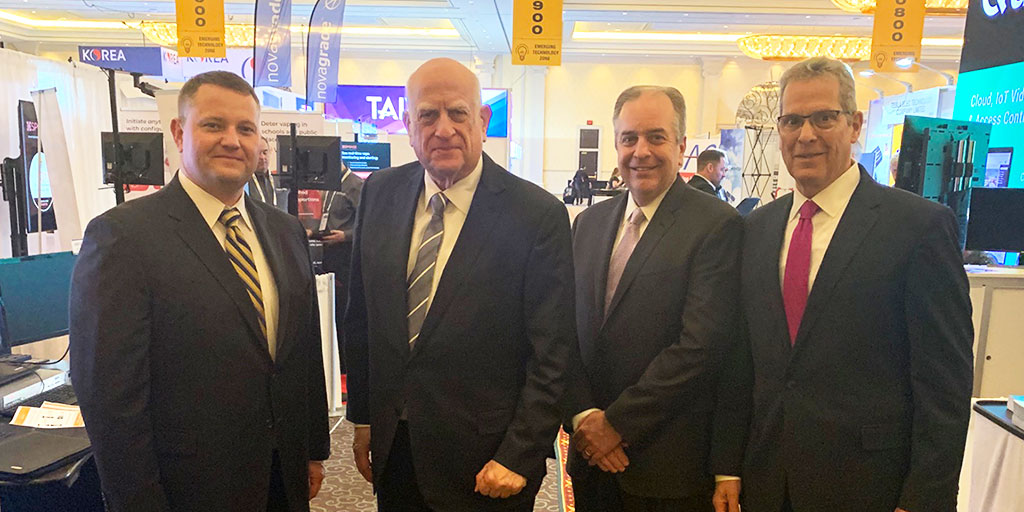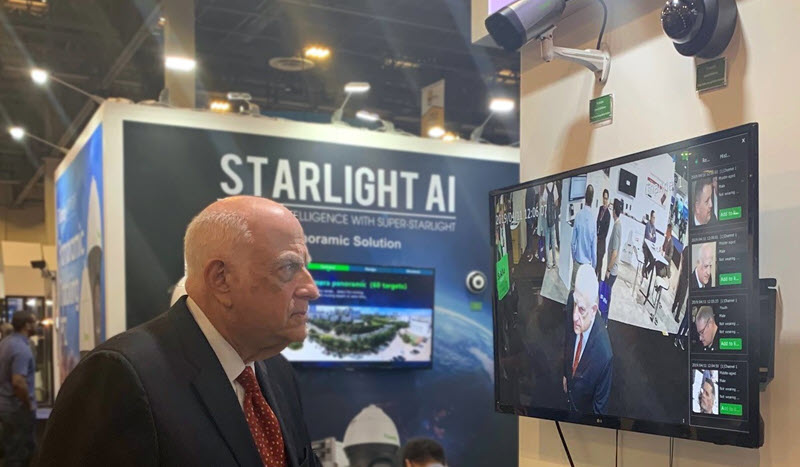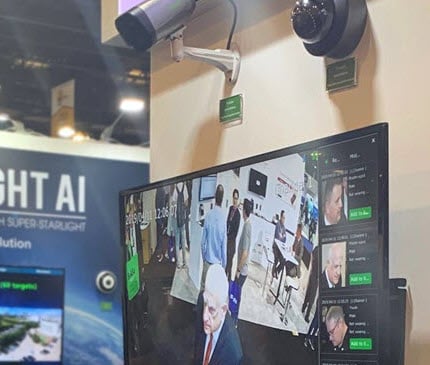Access Control | Video Surveillance | Intrusion Alarms
Highlights from the 2019 ISC West
Jared Reeves is Technical Services Manager at DGA. Jared and his team provide technical support to DGA customers and evaluate new security technologies for the company’s product portfolio. Outside of DGA, Jared serves as a Commissioner on the Wantagh Fire District Board of Fire Commissioners. Jared has been serving his local community as a volunteer firefighter and advanced emergency medical technician for almost 15 years.
What were the top security tech trends at this year's ISC West? Read more to find out.

With 30,000 attendees and 1,000 exhibitors, ISC West is arguably one of the most important industry trade shows DGA Security attends every year. As the Technical Services Lead at DGA Security, I try to learn about emerging security technology trends at the show and think through their implications for the diverse set of customers we serve.
After three days of attending the sessions and workshops, and walking the show floor, here are the top three trends from ISC West that I am keeping my eyes on:
Trend #1: Artificial Intelligence (AI) is still mostly marketing hype but could be a game changer in video analytics.

From Amazon’s Alexa to Uber’s self-driving cars, AI seems to be everywhere around us. Not surprisingly, many vendors at ISC were also touting their AI capabilities. Among many vendor pitches I heard, I am particularly excited about the new innovations that AI will enable in the video surveillance space.
Today’s AI technology is based on two concepts: machine learning and deep learning. Machine learning is a program that is designed to become more accurate over time at either performing a specific task or predicting an outcome without receiving explicit instructions on how to do so. The machine learning algorithm is initially “trained” on a known data set so that the algorithm can learn to detect patterns and use them to make predictions and detect abnormalities. Deep learning, a specialized form of machine learning, deepens the complexity and accuracy of the machine learning algorithms by using artificial neural networks. Unlike machine learning algorithms that require an initial “training set” of data, artificial neural networks can ingest a large amount of unstructured data and learn from them completely unsupervised.
Over time, deep learning will enable a tremendous leap in video analytics accuracy and functionality — ultimately saving time for businesses by helping them focus on the right high-risk situations while reducing the reliance on manual human review.
There are two ways in which AI can be incorporated into video analytics. With today’s IP cameras packing in ever more computing power and GPUs, AI-powered video analytics can be built directly into the cameras themselves. Alternatively, AI-powered video analytics can be incorporated into the video management system (VMS), a centralized software or server that collects and records video feed from multiple sources and provides an interface to end-users to interact with the system.
Let’s discuss specific examples of how AI can impact the accuracy of video analytics:
- Object classification: A typical IP camera today simply takes in the image and processes it, whereas AI-powered camera can differentiate between relevant images versus noise. For example, an AI-powered camera can be trained to detect a human vs. a Roomba or a raccoon moving in the protected area.
- Facial recognition: AI-powered IP camera can automatically flag a “person of interest” in a busy area, or detect a stranger loitering in front of a building vs. regular employees who are coming and going.
- People counting: Many retailers and mass event organizers install people-counting cameras that are highly specialized and costly. AI can potentially turn an average off-the-shelf IP camera into a sophisticated people counting camera at a fraction of the cost.
These are just a few of many video analytics that can be made more useful or cost effective by the emerging AI technology. In a nutshell, AI is all about reducing the “bad data” so you can focus on the relevant data. While I am excited about the potential impact of AI in video surveillance, AI applications in security technology are still in their infancy. I have to evaluate all the AI-touting vendors with a very skeptical eye to get past the marketing hype. I recommend any buyer to ask: Why is this company using AI? How much development went into their AI-enhanced product? How does this company define AI? How is this company’s AI-enhanced product better than its existing products?
Trend #2: LiDAR + AI + PTZ camera could become a mainstream security tech for perimeter protection.
LiDAR, coupled with AI, could find an attractive niche market for perimeter protection for businesses and buildings if the technology becomes more affordable over the next few years. LiDAR is a remote sensing technology that uses laser pulsing on a target to create a digital 3D representation. Its most popular application has been in land surveys that use a LiDAR sensor attached to a drone or aircraft to create a 3D image of the land surface that’s obscured by trees and vegetation. LiDAR technology is great for canvassing a large area with a very high level of accuracy — whether it’s day or night. That’s why it’s also being used in autonomous vehicles to scan a wide field of view to detect objects and in border protection to monitor human crossings in areas that lack a physical barrier.
In business security, a LiDAR sensor coupled with AI-based perception software and PTZ camera can be the next killer application for perimeter protection or for monitoring any large area (indoor or outdoor). An AI-powered LiDAR sensor can intelligently detect objects of interest (e.g., human vs. stray cat) that show a high-risk behavior (e.g., walking parallel to the building wall vs. toward the building wall). If a high-risk event is detected, the LiDAR sensor can direct the PTZ camera to lock on the object and track it while sending a real-time alert to the authorities.
The LiDAR technology is still cost prohibitive for widespread adoption for business security. But if the Moore’s Law still holds true, we can expect to see LiDAR technology make bigger inroads into the mainstream business security world in the coming years.
Trend #3: Access Control as a Service (ACaaS) is officially a trend.
There were more so-called ACaaS startups at ISC West this year than ever before. What makes this new crop of access control startups unique is that they are focused on developing the “brain” of the access control system rather than the proprietary hardware. Their cloud-based software solutions typically run on industry-standard hardware from well-established companies or, more often, their hardware is built using off-the-shelf components. This mindset shift is pretty significant because access control solutions have traditionally been very hardware centric. Affordable, high-quality components such as a system on chip (SoC), a single-board device that integrates all components of a computer, is making it cheaper and faster for more companies to jump into the ACaaS bandwagon.



